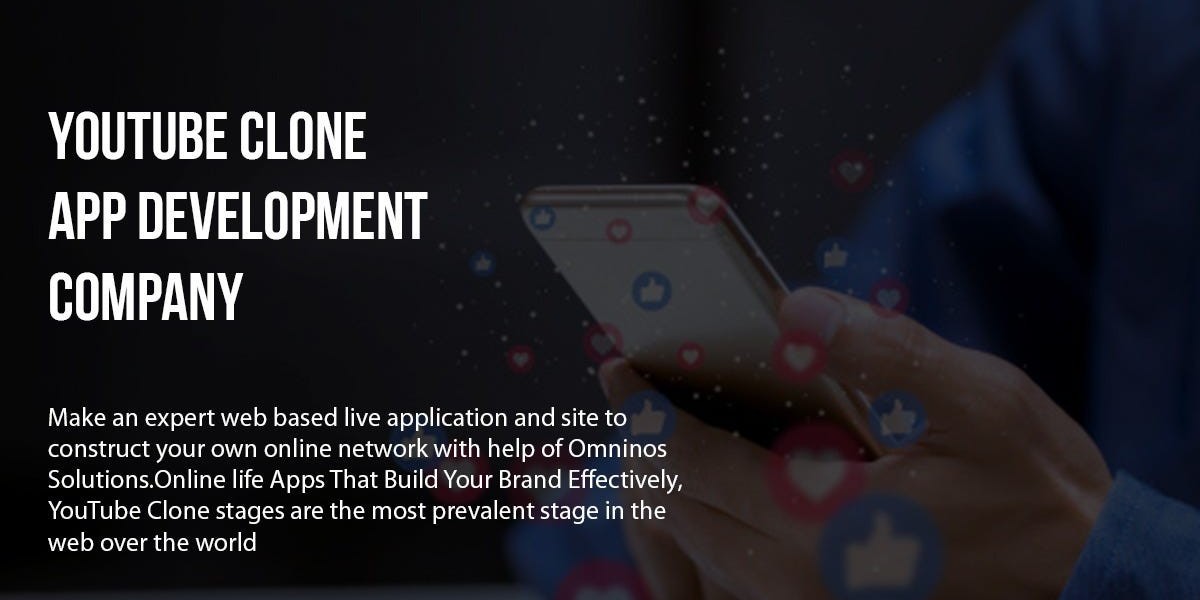In the world of online video sharing, YouTube stands tall as a behemoth. Its popularity, functionality, and user-friendly interface have made it the go-to platform for video content creators and viewers alike. But have you ever wondered how you can create your own version of YouTube? In this guide, we'll walk you through the process of building a YouTube clone, step by step.
Step 1: Planning and Preparation
Before diving into the development process, it's crucial to have a clear plan of what you want your YouTube clone to look like and what features it should have. Here are some key points to consider.
Identify Your Target Audience:
Determine who your platform will cater to. Will it be for general users, or will it focus on a specific niche?
Feature Set:
Make a list of features you want to include, such as user authentication, video uploading, commenting, liking, subscribing, etc.
Technology Stack:
Choose the right technology stack for your project. You can use technologies like HTML, CSS, JavaScript for the frontend, and languages like Python, Ruby, or Node.js for the backend.
Step 2: Setting Up Your Development Environment
Once you have a clear plan in place, it's time to set up your development environment. Follow these steps:
Install Node.js:
If you haven't already, download and install Node.js from the [official website](https://nodejs.org/).
Choose a Framework:
Select a backend framework like Express.js or Flask to handle server-side logic.
Set Up a Database:
Choose a database system such as MongoDB, MySQL, or PostgreSQL for storing user data, videos, comments, etc.
Step 3: Building the Backend:
The backend is the backbone of your application. It will handle user authentication, video uploading, storing data, and serving content to the frontend. Here's how you can build it:
User Authentication:
Implement user authentication using libraries like Passport.js (for Node.js) or Flask-Login (for Python).
Video Upload:
Allow users to upload videos to your platform. You can use libraries like Multer (for Node.js) or Flask-Uploads (for Python) to handle file uploads.
Database Integration:
Integrate your backend with the chosen database system to store user data, video information, comments, etc.
Step 4: Developing the Frontend
The frontend is what users will interact with. It should be intuitive, responsive, and visually appealing. Follow these steps to build the frontend:
Design the User Interface:
Use HTML, CSS, and JavaScript to create a user-friendly interface. You can use frameworks like Bootstrap or Materialize CSS to make the process easier.
Implement Video Player:
Integrate a video player using HTML5 video player or third-party libraries like Plyr.js or Video.js.
Add Interactivity:
Implement features like liking, commenting, subscribing, etc., using JavaScript and AJAX.
Step 5: Testing
Testing is a crucial step to ensure that your application works as expected and is free of bugs. Here's what you can do:
Unit Testing:
Write unit tests for individual components of your application using testing frameworks like Jest (for Node.js) or Pytest (for Python).
Integration Testing:
Test how different components of your application interact with each other.
User Testing:
Gather feedback from real users to identify any usability issues or bugs.
Step 6: Deployment
Once you are satisfied with the testing, it's time to deploy your application. Here's how you can do it:
Choose a Hosting Provider:
Select a hosting provider like Heroku, AWS, or DigitalOcean to deploy your application.
Set Up Continuous Integration/Continuous Deployment (CI/CD):
Automate the deployment process using CI/CD tools like Jenkins, Travis CI, or GitHub Actions.
Conclusion:
Building a YouTube clone from scratch is a challenging but rewarding task. By following the steps outlined in this guide, you can create a platform that allows users to upload, share, and watch videos, just like they do on YouTube. So what are you waiting for? Get started on building your own YouTube clone today!
Read More: - https://www.omninos.in/youtube-clone-app-script-development.php
Follow Us on Facebook: - https://www.facebook.com/omninosTechnologies
Follow Us on Twitter: - https://twitter.com/omninoss
Follow Us on Instagram: - https://www.instagram.com/omninosinsta/
Follow Us on Linkedin: - https://www.linkedin.com/company/omninos-solutions/
Address: - SCO 454 to 460, Sector 117, TDI South X2,Backside Star Hospital
Call US: +91 9988880293
Email US: - [email protected]



